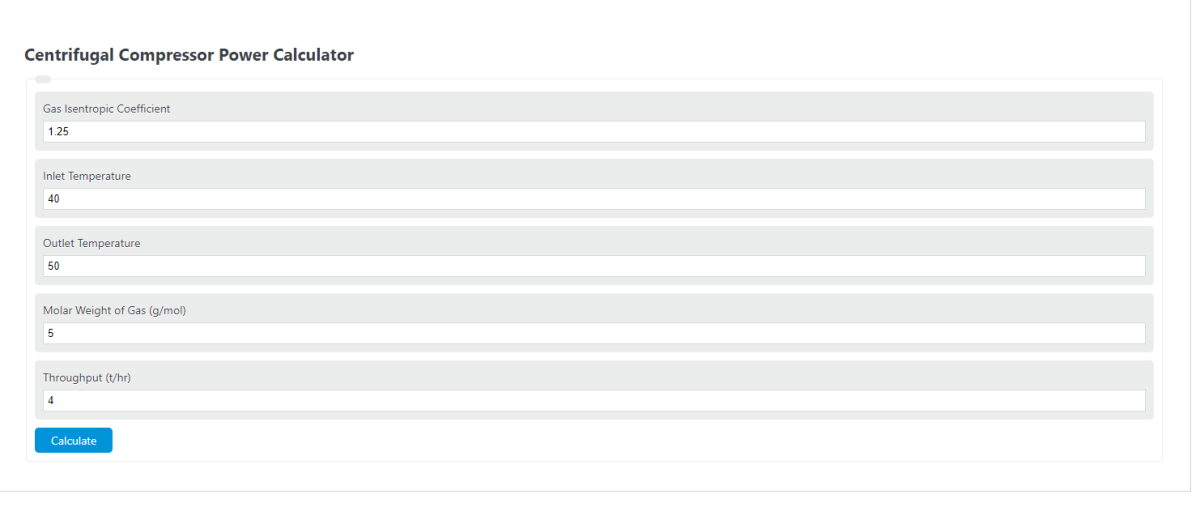Enter the inlet temperature, outlet temperature, molar weight, throughput, and isentropic coefficient into the calculator to determine the compressor power.
- Reciprocating Compressor Volumetric Efficiency Calculator
- Condenser Efficiency Calculator
- Gas Cylinder Consumption Calculator
Centrifugal Compressor Power Formula
The following equation is used to calculate the Centrifugal Compressor Power.
P = 2.31 * k/(k-1) * ((To-Ti)/M)*Q
- Where P is the power (kW)
- k is the isentropic gas coefficient.
- To is the outlet temperature (C or K)
- Ti is the inlet temperature (C or K)
- M is the molar weight of the gas (g/mol)
- Q is the throughput (t/h)
What is a Centrifugal Compressor Power?
Definition:
Centrifugal Compressor Power is the power required to run a centrifugal compressor. The term can also be applied to the power produced by the compressor.
FAQ
What factors affect the efficiency of a centrifugal compressor?
The efficiency of a centrifugal compressor is influenced by several factors including the design of the compressor, the isentropic efficiency, the condition of the inlet air (temperature and humidity), the speed of rotation, and the load conditions. Proper maintenance and operation within the recommended parameters are crucial for maintaining high efficiency.
How does the isentropic coefficient (k) impact the power calculation of a centrifugal compressor?
The isentropic coefficient (k), also known as the adiabatic index, plays a vital role in the power calculation of a centrifugal compressor. It affects how changes in temperature impact the pressure and density of the gas being compressed. A higher isentropic coefficient indicates a gas that is less prone to compression, requiring more power to achieve the desired compression ratio.
Can centrifugal compressors be used for gases other than air, and how does this affect the calculation?
Yes, centrifugal compressors can be used for a variety of gases besides air. The type of gas being compressed affects the calculation through its molar weight (M) and isentropic coefficient (k). Different gases have different physical properties, which influence these variables and, consequently, the compressor’s power requirement. It’s important to use the correct values for the specific gas to ensure accurate power calculations.
